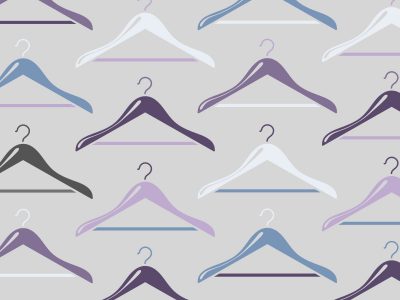Middle school and high school can be some of the hardest times in our lives. Everyone is awkward and unsure of themselves. It is a time of ultimate discomfort, insecurity and the desire to fit in with everyone else. I remember being more concerned with what my peers were wearing and if they would like my outfits than anything else.
This period is made significantly harder when there are archaic, sexist rules in place that sexualize and place judgment on the bodies of teenage girls.

This month, Florida students created and signed a petition against their local high school’s dress code for its sexist standards. At that school, girls who wore leggings, showed their shoulders or exposed their midriffs could be subject to in-school suspension for the day if they weren’t able to change into a new outfit.
I understand schools may implement a dress code to avoid profanity on clothing, for example, since that would not be conducive to a learning environment. But in reality, most dress codes disproportionately target young women for wearing fairly common items of clothing.
Leggings are a normal article of clothing and banning them implies that young girls’ bodies are something to be sexualized even though they are minors. In my middle school, girls were often sent to the principal’s office for wearing shorts deemed too short, even in June with temperatures hitting 80 degrees Fahrenheit every day.
This taught 12-year-old me that showing my legs was wrong because it could be “distracting.” What about a pre-teen’s legs are distracting?
Furthermore, why is it my problem if other boys and men are objectifying perfectly normal body parts? Maybe we should be more focused on teaching young boys how to not sexualize girls and women.
Severe enforcement of dress codes can also destroy self-confidence, singling someone out when all they are trying to do is fit in. I certainly did not want to draw extra attention to myself or my body in middle school.
Young girls are missing out on their education because their schools pay more attention to the clothing and comfort of male students than what is going on in the classroom.

Blaming young girls for their “distracting” bodies is a precursor to blaming rape victims for their attacks. It rings far too similar to the commonly asked question: “Well, what were you wearing?”
We are too focused on what girls and women are wearing all the time when we should be focusing on the root of the actual issue. If we use all of the energy we put toward policing the bodies of women to instead teach young boys to not sexualize and rape women, then perhaps we would not have a culture of sexual assault.
Telling underage children what they can and cannot wear because other people might react to their bodies in a certain way is gross and inappropriate. When I think about how we used to get dress coded in middle school, it makes me so angry because I know my shorts from Limited Too were perfectly acceptable for my pre-teen body.
Dress codes also raise the issue of body-shaming because girls who hit puberty earlier than others in middle school got dress coded more often simply because a shirt looked different on them than it did on me.
We need to do better for our adolescent girls because these sexist policies are teaching them the wrong lesson about their bodies. We should be more concerned about raising empowered, confident women who have autonomy over their bodies. They deserve to know they can be sexual without shame, but they do not deserve to be constantly sexualized.





















































































































